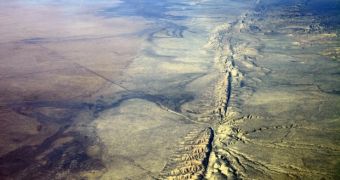Researchers in Canada reveal in a new paper that the mysterious lights which are oftentimes reported before or during earthquakes occur alongside geological rift environments more often than not, suggesting the these locations may somehow be triggering the weird emissions.
Earthquake lights have been reported around the world for centuries, but insufficient accurate data were available for scientists to determine their root cause. The new study may provide a huge boost in the right direction, say geologists with the Ministry of Natural Resources, in Quebec City, Canada.
The lead author of the new paper, which was published in the January/February issue of Seismological Research Letter, was geologist Robert Thériault. The explanation he and his group came up with reunites several proposals and previous attempts at explaining this bizarre phenomenon.
A new catalog of earthquake lights was developed for this research, and then thoroughly analyzed. The team noticed that these lights tended to appear more in areas where the ground was being pulled apart shortly before and during earthquakes. These regions are called geological rift environments.
The new paper suggests that the rocks inside fault lines produce electrical charges when they grind against each other. These charges travel straight up through the lines and eventually make their way into the atmosphere, where they produce a glow when they interact with the air.
“Earthquake lights are a real phenomenon – they’re not UFOs. They can be scientifically explained,” Thériault explains. He adds that one of the reasons why it took so long for an explanation to be developed is that eyewitness testimonies usually get distorted very fast.
This makes people describe flames or smoke coming out of the ground, or glowing clouds similar to auroras, or fireballs raining from the sky like meteors. Finding the kernels of truth in these conflicting reports is monumental work, but well worth the effort.
“We’re all interested in finding out more about earthquake lights. It’s just not a regular area of scientific inquiry, because there’s no way to do an experiment on them,” comments Boston College geophysicist John Ebel, who was not a part of the new study.
Raising awareness about earthquake lights can also contribute to public safety. There was a recorded case in Italy in 2009 where a man saw weird lights reflecting off items in his kitchen. Two hours after he took his family to safety, a devastating earthquake struck the region, but he and his loved ones were safe, Nature reports.

 14 DAY TRIAL //
14 DAY TRIAL //